The Xantolo masks that follow demonstrate the role of color to mark the face of a dead man. The first three of these are painted yellow. Such an unnatural color may well be intended to convey that this person’s skin is no longer healthy or alive.
I got the first of these from Jaled Muyaes and Estela Ogazón in 1997.
The “buck teeth” give this mask a silly expression.
This mask is definitely well carved. Two small holes, one between the teeth and the other through the chin, were evidently meant to channel fresh air to the dancer’s mouth. In contrast, the holes flanking a crack in the forehead were lashing points for a piece of string or leather that was intended to stabilize that area. This mask is 8 inches tall, 5¾ inches wide, and 3 inches deep.
The back shows a satisfying pattern of staining from use. The number 2298 marks this as yet another mask from the 1981 show in Mexico City.
Here is another yellow Xantolo mask. Although I bought it from Rene´Bustamante, it was originally collected by Jaled Muyaes and Estela Ogazón.
Its shapelessness reminds one of the skin masks that were worn by Aztec priests to impersonate Xipe Totec.
This mask is 9 inches tall, 6 inches wide, and 2¾ inches deep. The face has a primitive shape.
This is another mask with a beautiful pattern of wear and one of those old numbers from the 1981 show. “Chantolo” is an incorrect but commonly used way to spell Xantolo.
The third yellow Xantolo mask, which I obtained from Jaled Muyaes and Estela Ogazón in 1999, has a rectangular shape.
The lips are carved in relief but the mustache is merely painted on.
This is another Xantolo that has silver foil applied to some of the teeth. It is 8½ inches tall, 6 inches wide, and 3 inches deep.
The holes to attach the top strap or string are drilled diagonally; they go through the back wall but emerge from the top of the mask. This is an unusual detail used by some carvers to avoid an unsightly hole on the forehead. The center hole has broken out. The back has obvious wear.
Like the yellow masks, those with blue or green faces also seem intended to portray the dead. The three masks that follow have contributed to this impression, because they were identified as Xantolo masks at the time of their collection in the field and they have these unnatural skin tones. The first is particularly graphic.
I got this Xantolo mask from the Phoenix Gallery in Georgetown DC, in 1995. It was originally collected by Jaled Muyaes and Estela Ogazón.
This Xantolo mask has red, green, and blue paint to dramatize it’s portrayal of death. It once had a gaping hole under the nose, but this has been closed with a patch.
The red paint obviously represents blood that is streaming down the face from multiple wounds. This mask is 8½ inches tall, 6 inches wide, and 3 inches deep.
Can you read upside down? MEXICO is written across the top of the back. On the left side we find another one of those numbers from the 1981 show. The extreme signs of age and wear are obvious.
Painted a pale blue color, this mask signals its status in a more subtle way. I bought it in an antique store in Santa Fe, New Mexico, in 2002. It was originally collected by Jaled Muyaes and Estela Ogazón.
This mask has an unusual shape.
It is 9 inches tall, 6½ inches wide, and 4½ inches deep.
The chin had broken out and that part of the mask was replaced with plaster. It is difficult to read the top part, maybe Huehue, while the lower lines say “Tecomatla, Veracruz.”
This next mask is a deeper shade of blue. I bought it on EBay™ in 2002.
The eyebrows and mustache are carved in relief and then grooved. The eyes are elaborately carved in relief. If not for the blue paint, I would wonder whether this was a Moor from Puebla.
There are also relief carved ears of a simple design. This mask is 8¾ inches tall, 6¼ inches wide, and 4½ inches deep.
The lower part of the back is dark from use. For a change, this mask does not demonstrate obvious evidence that it was formerly in the collection of Jaled and Estela.
The next mask in today’s discussion is another that has been painted in a particularly unnatural shade. I obtained this mask from Robin and Barbara Cleaver in 1993.
The carving is rather detailed. The eyes are carved as half spheres. The lips are delicately carved in relief. Heavy use has led to broken areas under the left eye, beside the left corner of the mouth, and on the upper lip.
There is a delicately carved ear on the left side and none on the right. This mask is 9 inches tall, 6 inches wide, and 3¼ inches deep.
This is another Chantolo [Xantolo] according to the field label. The back demonstrates remarkable wear.
The last Xantolo mask in this series is chartreuse. I bought it from John Isaac, in Albuquerque, in 2002. It is from Hidalgo.
This mask seems to have black goggles around the eyes. The mustache is carved in relief. The mouth has a sad expression.
I have absolutely no idea why “18” was painted on the right side in bright red paint. This mask is 8 inches tall, 6 inches wide, and 3½ inches deep.
One sees typical staining on the back, as if from long use.
Next week we will look at Xantolo masks with red faces.


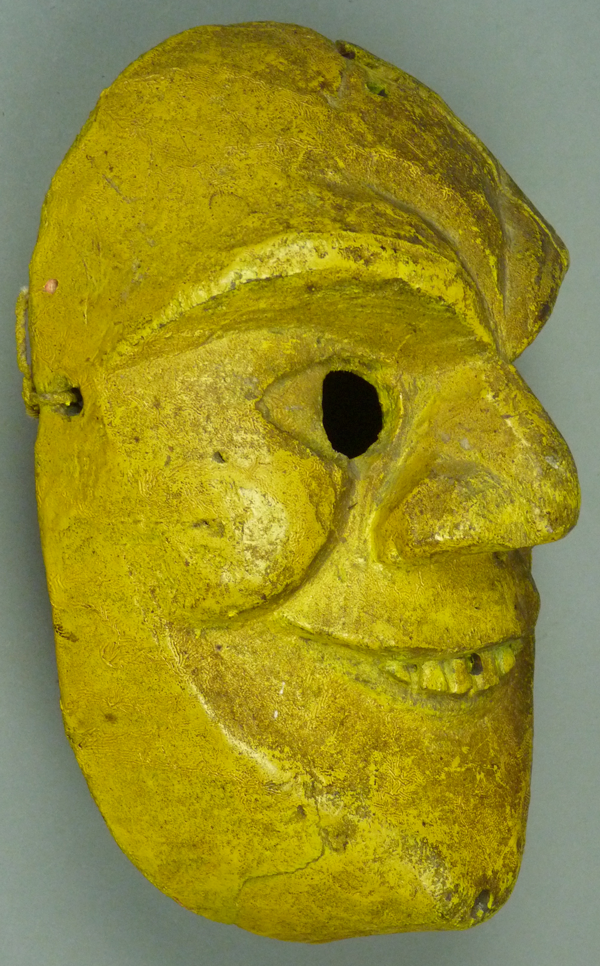
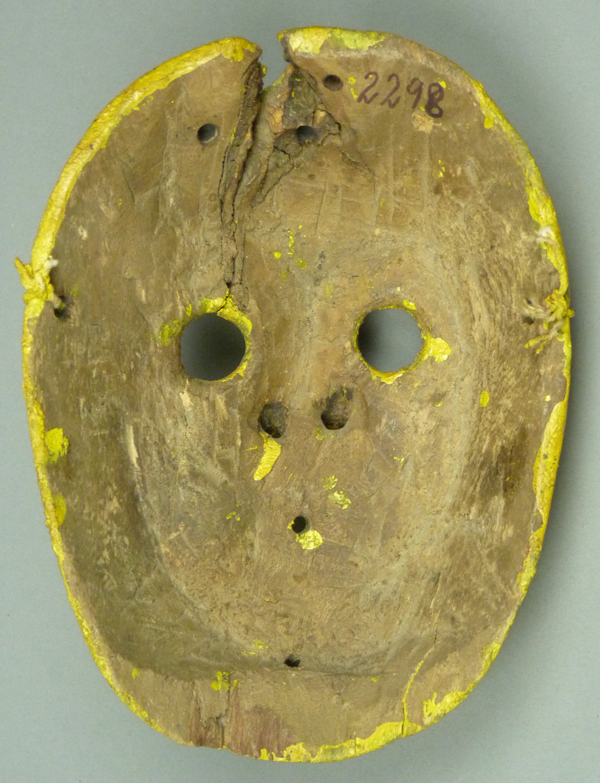
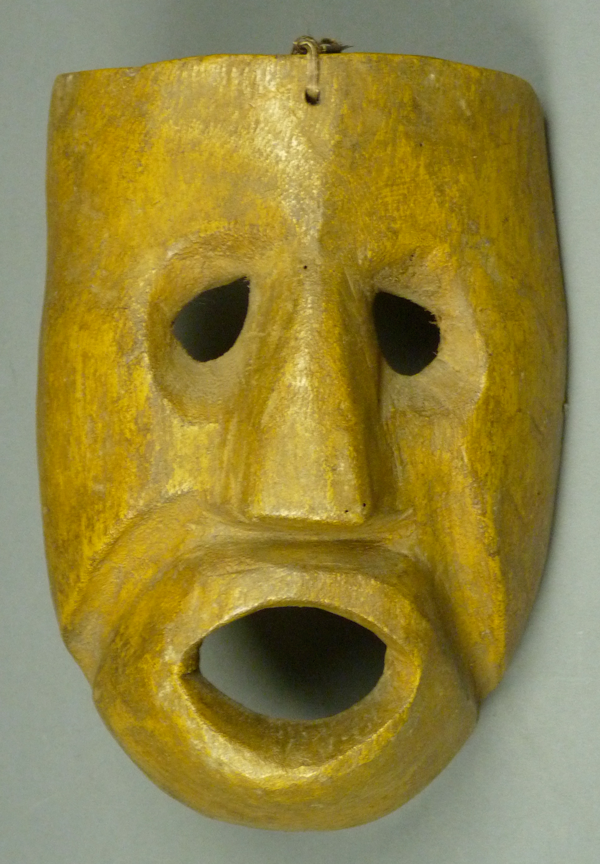
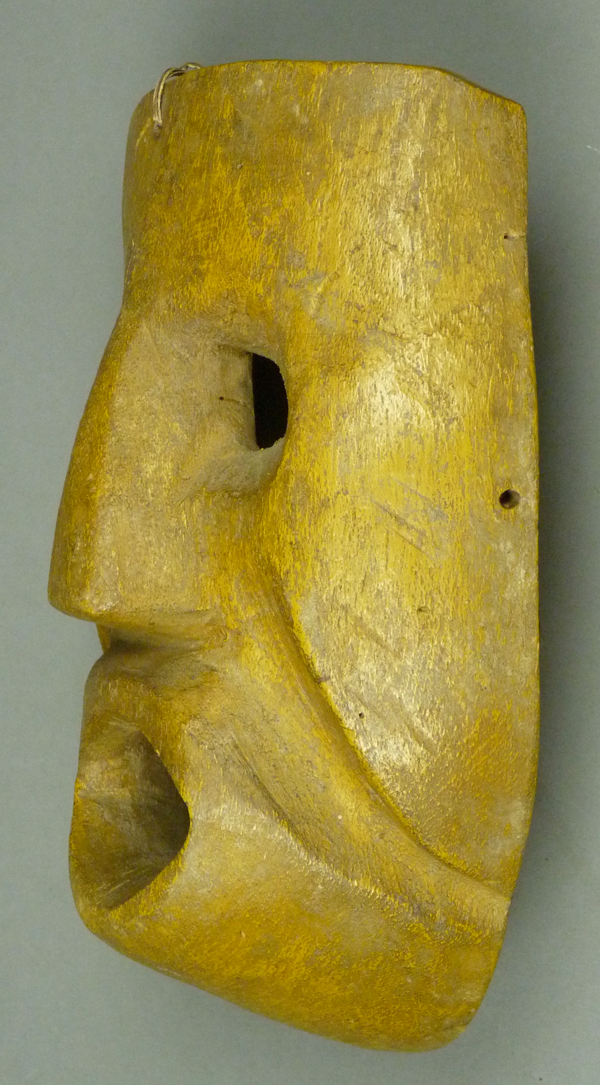
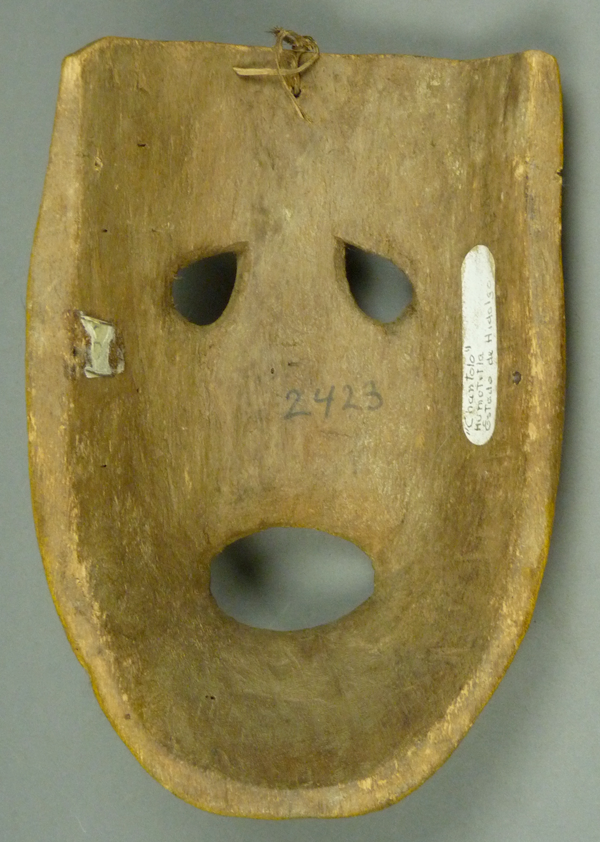
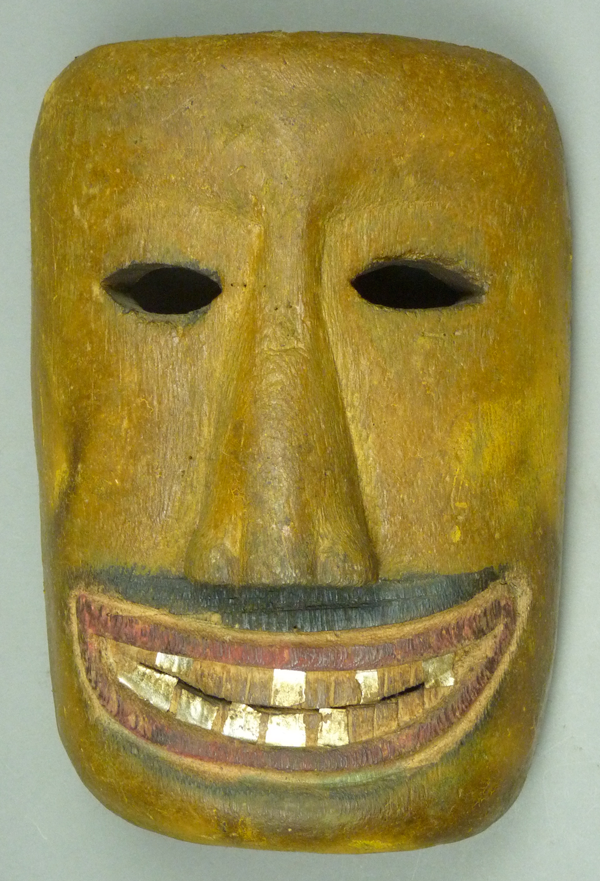
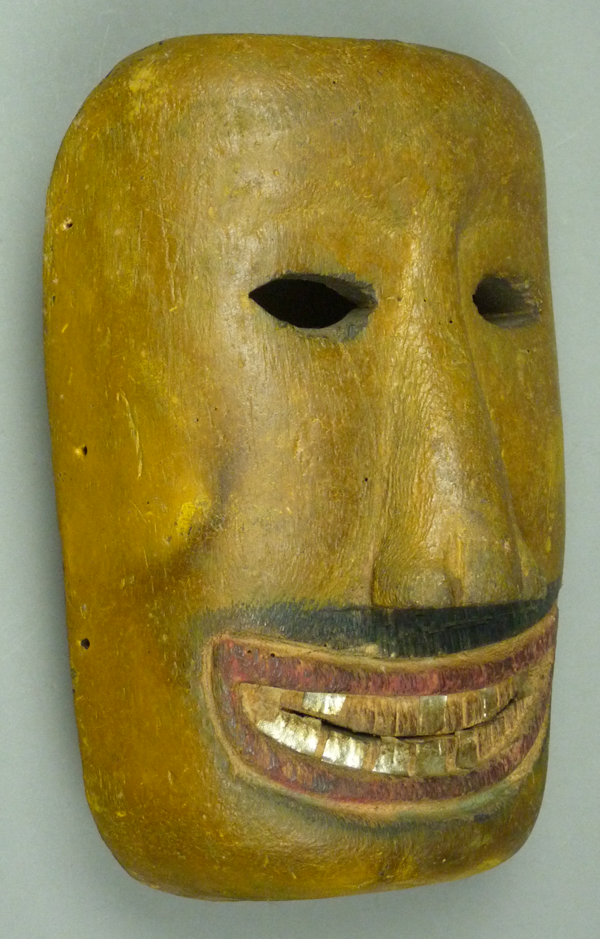
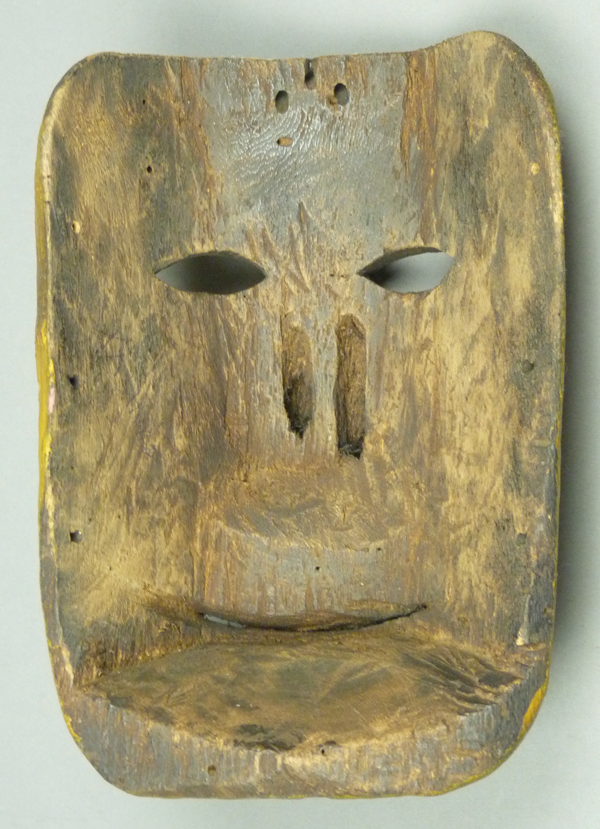
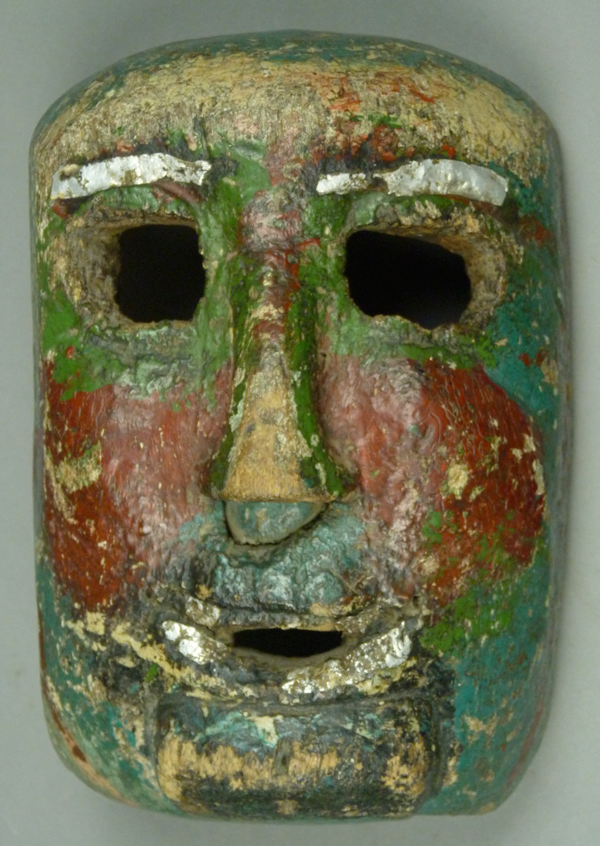
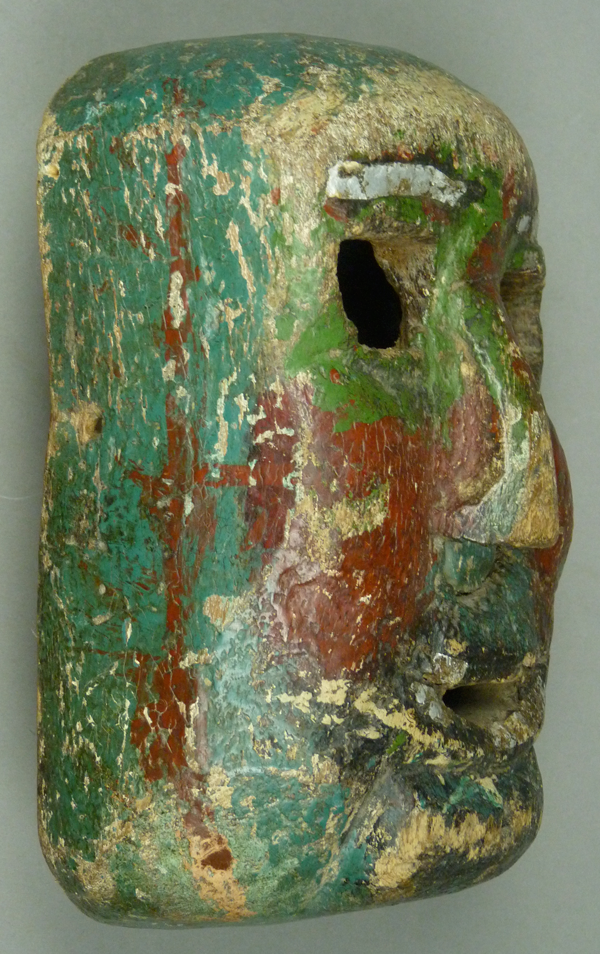
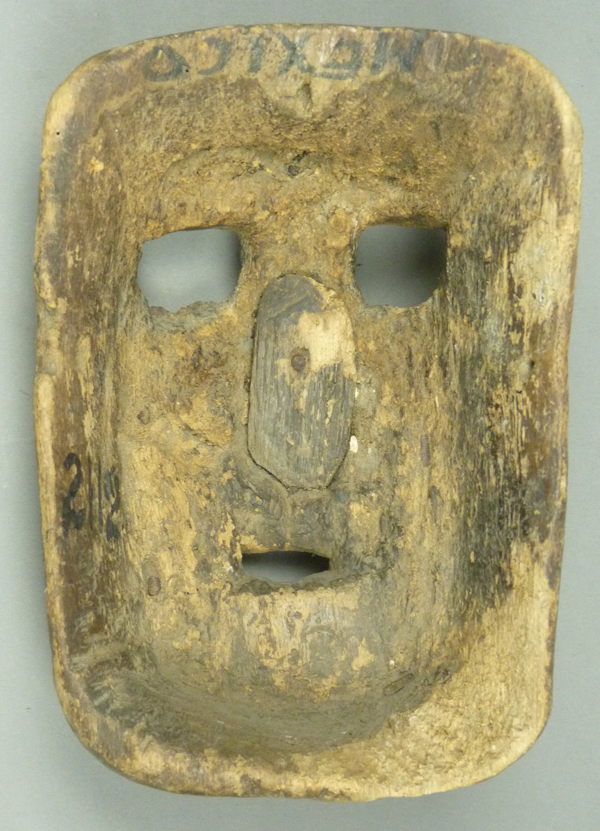
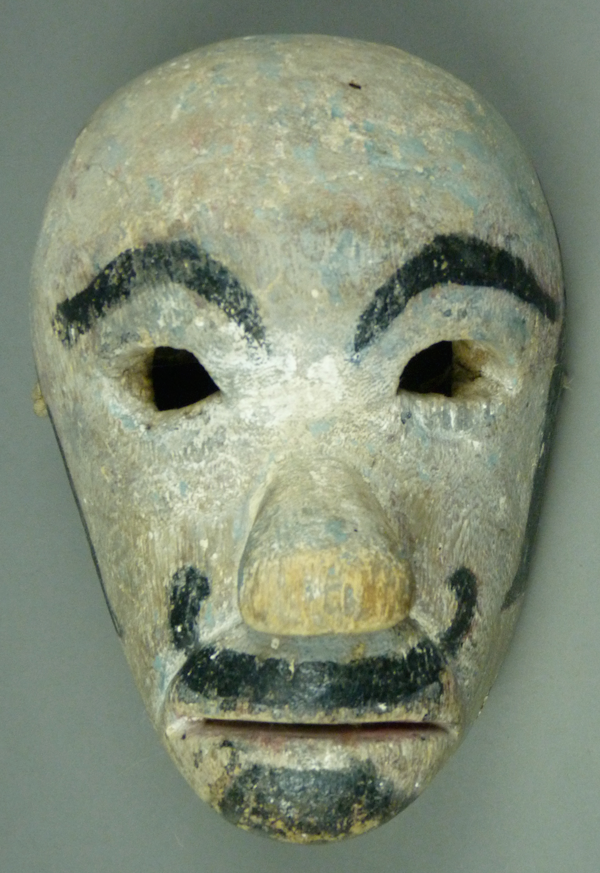
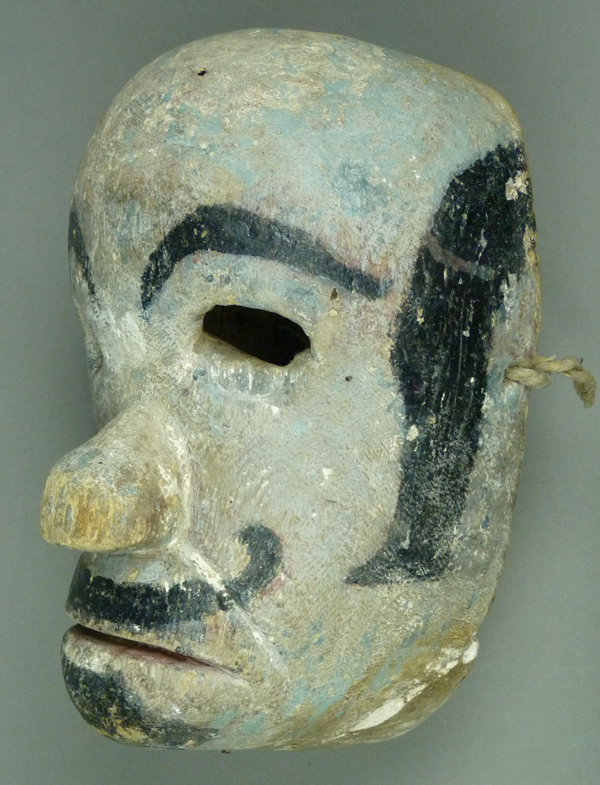
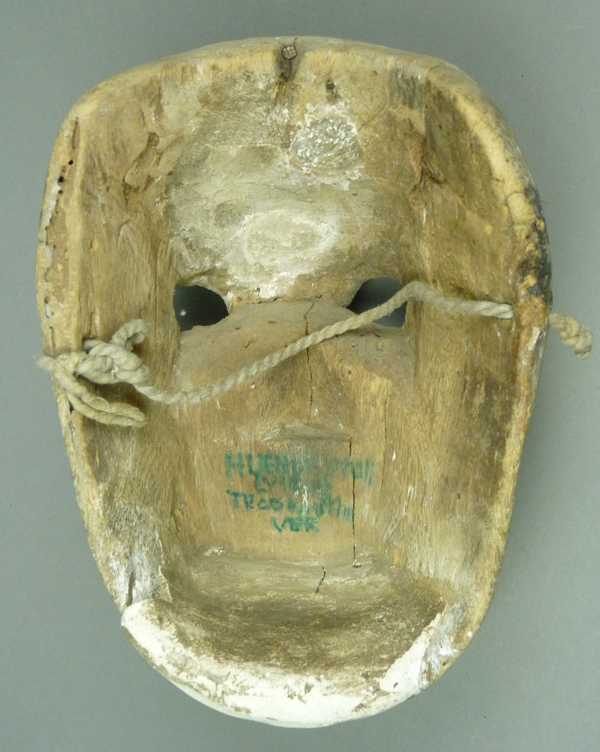
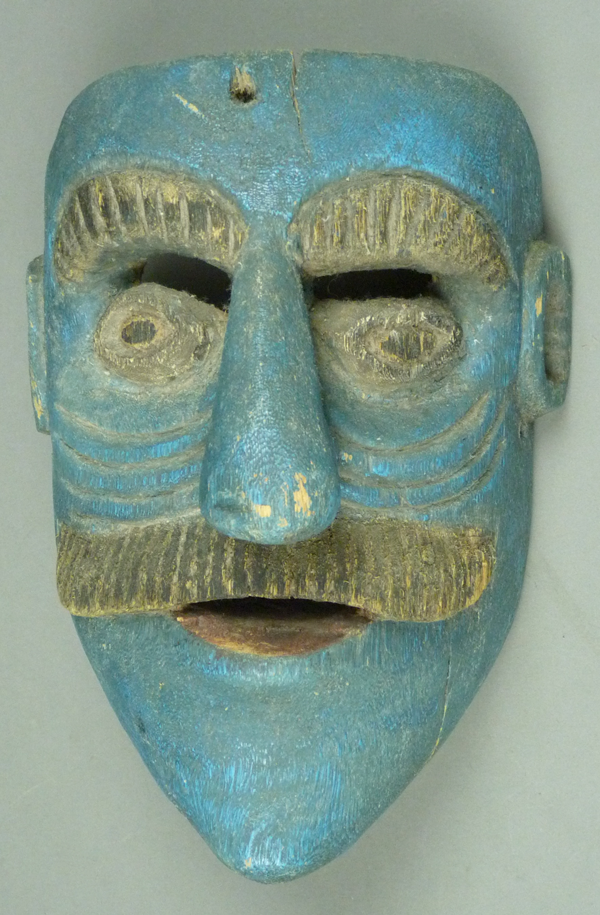
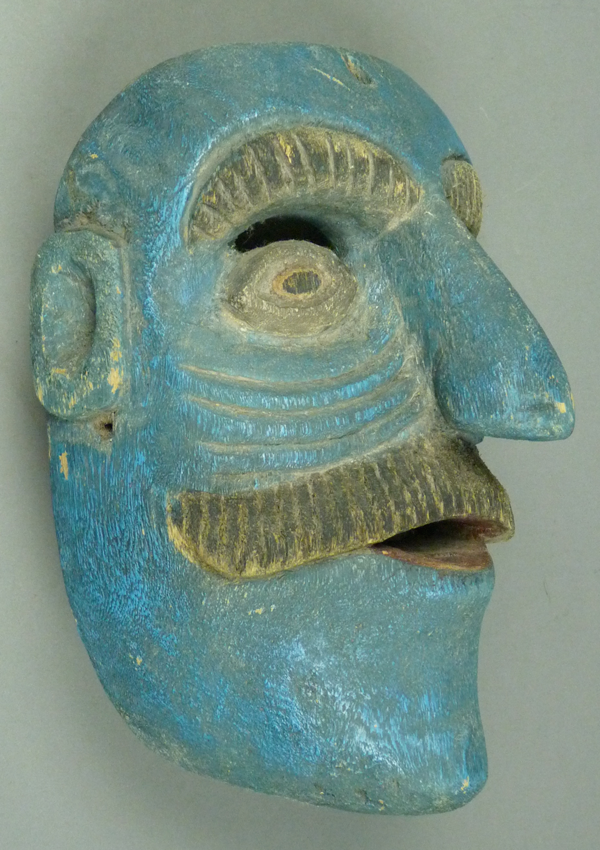
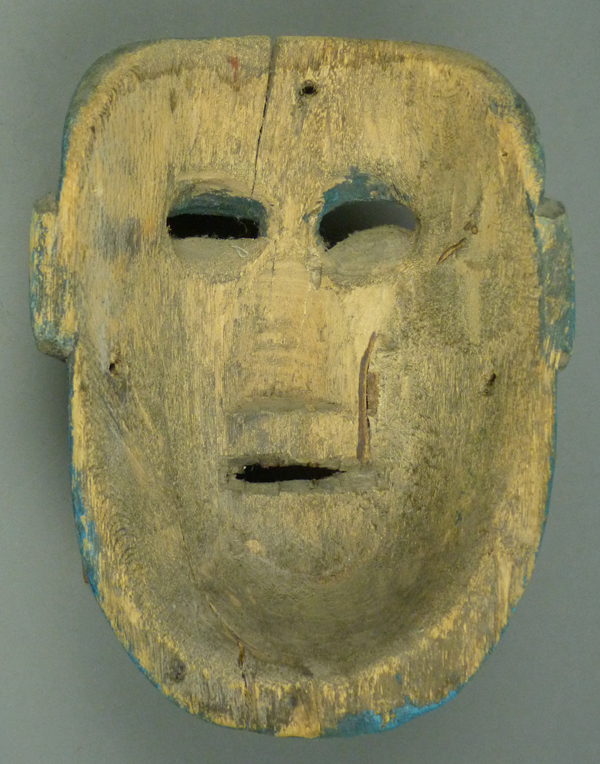
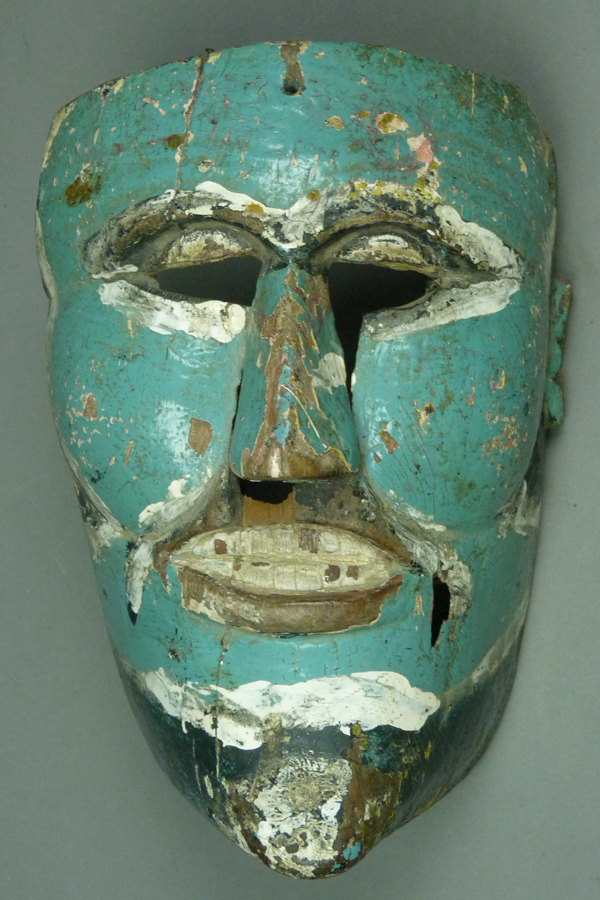
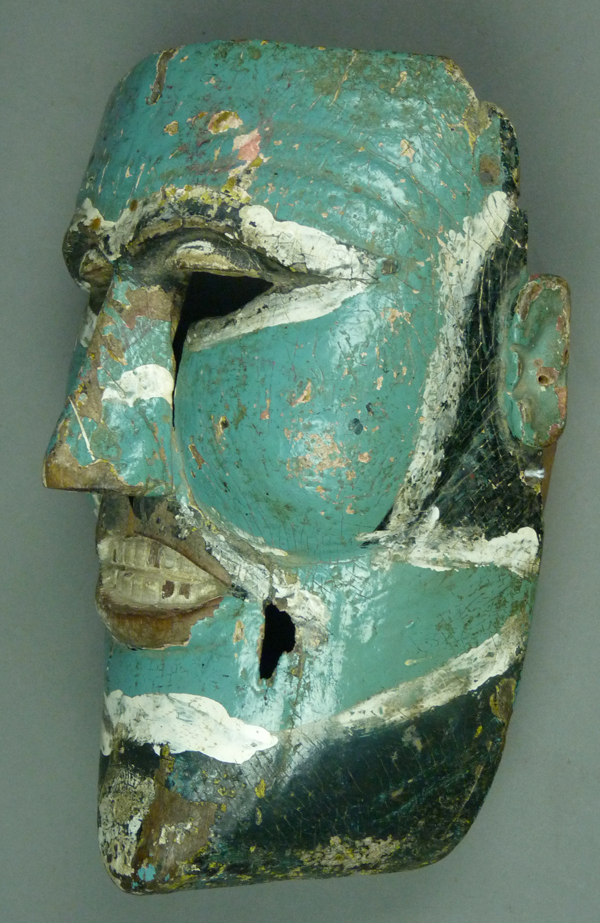
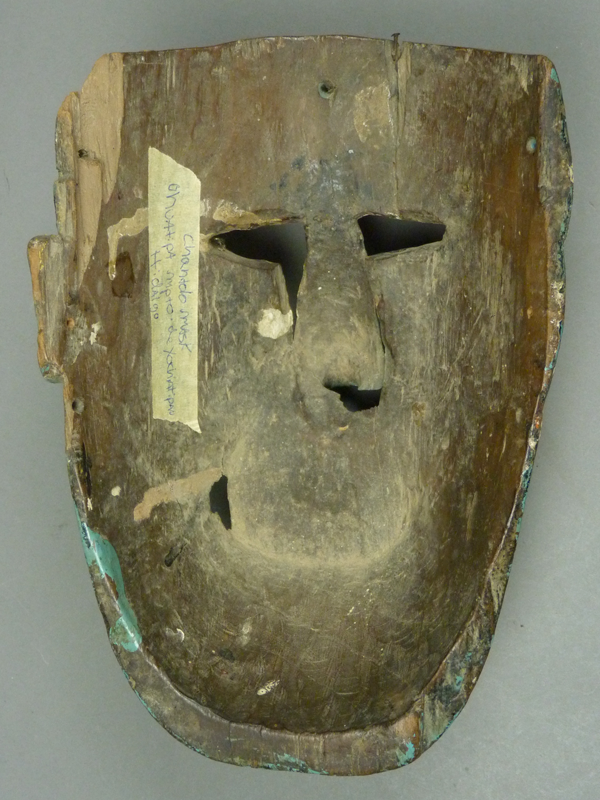
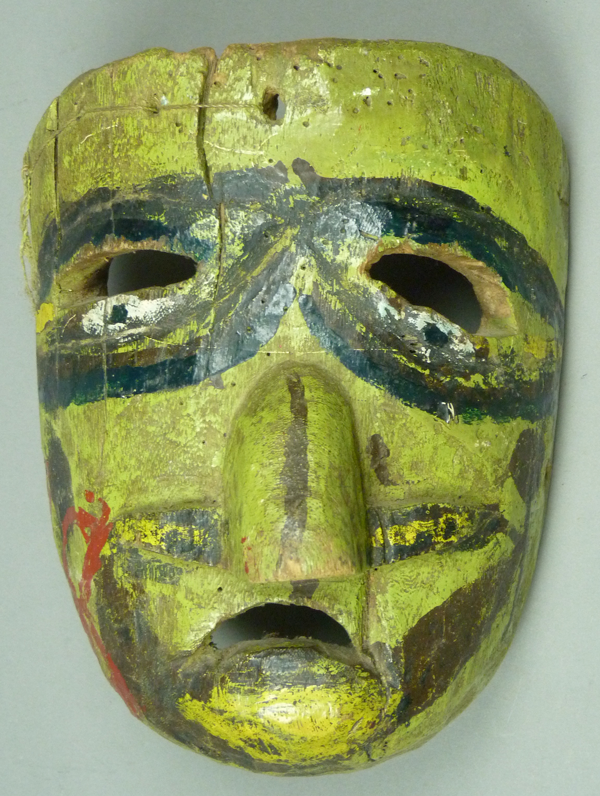
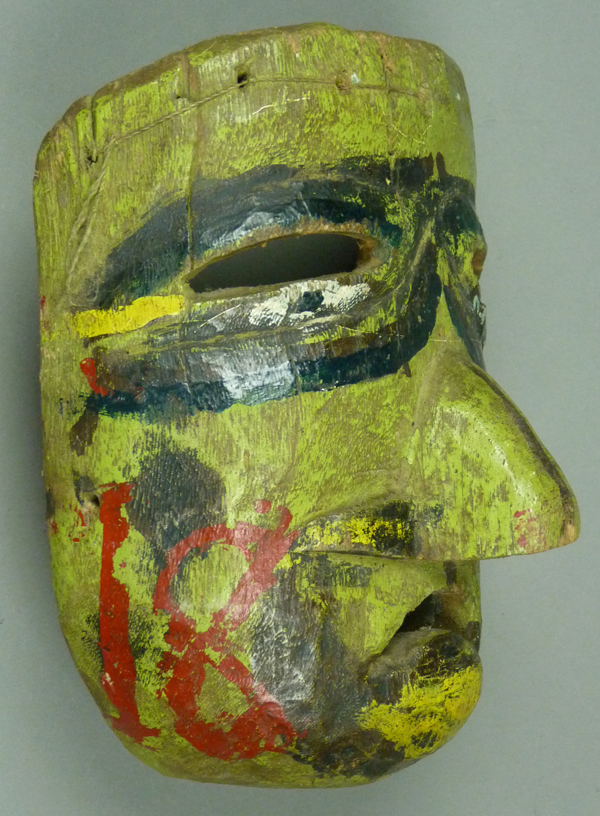

Pingback: Six Moros or Related Masks from Four Mexican States | Mexican Dance Masks